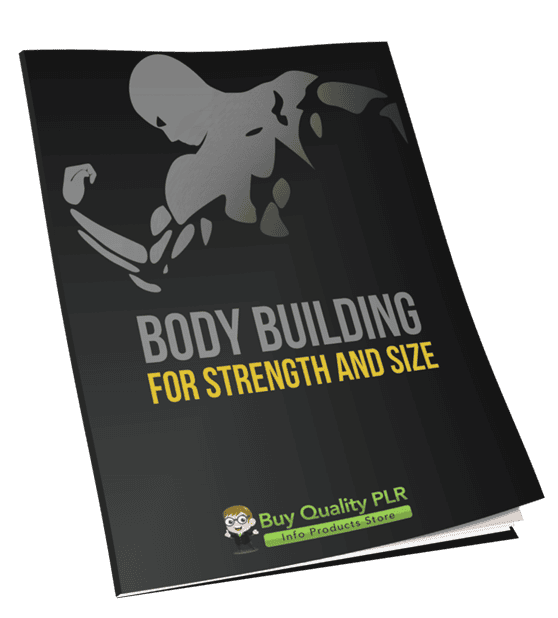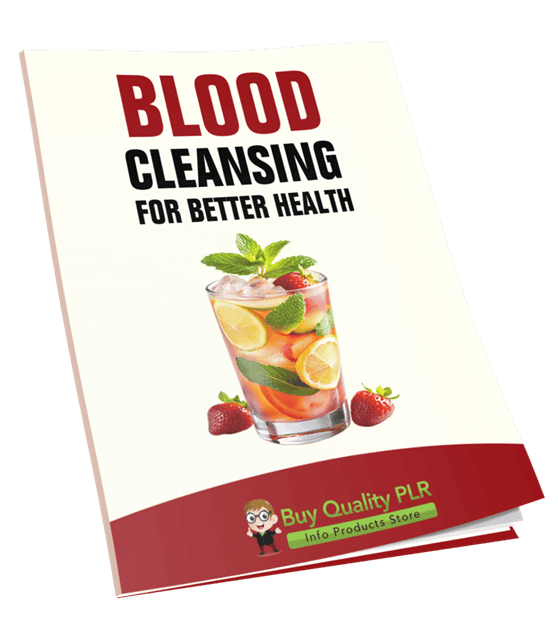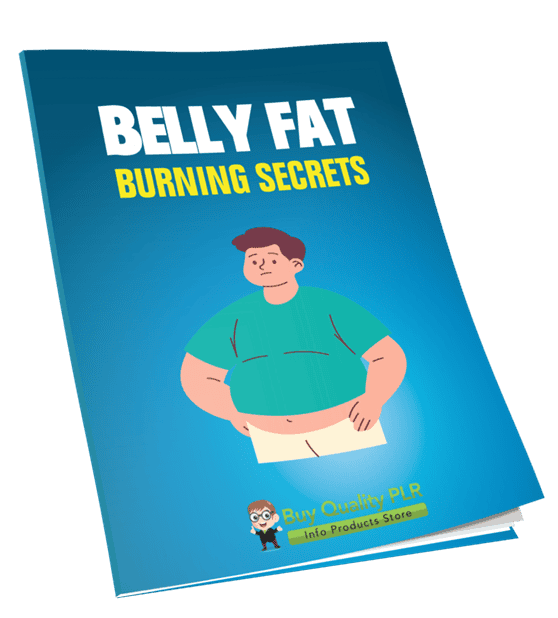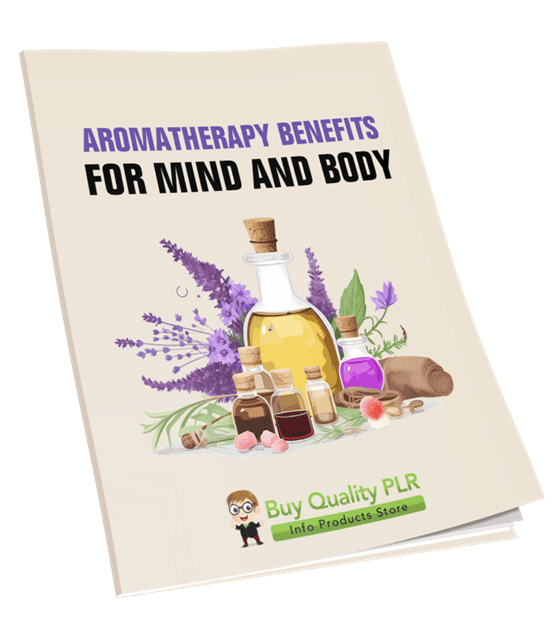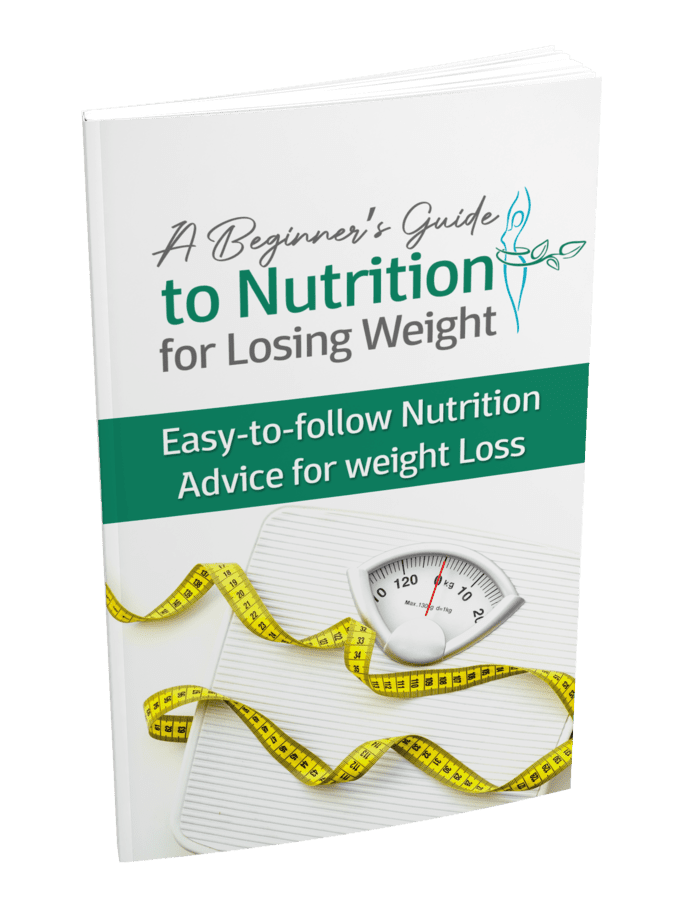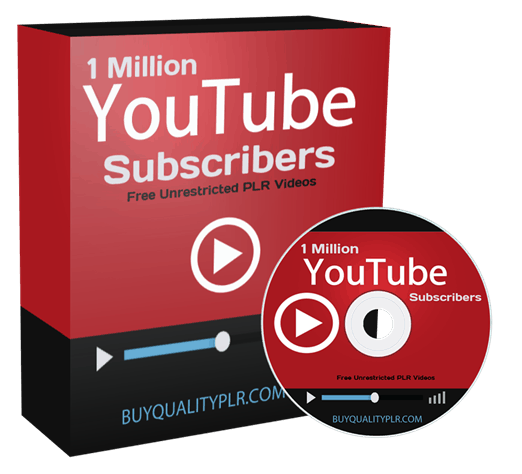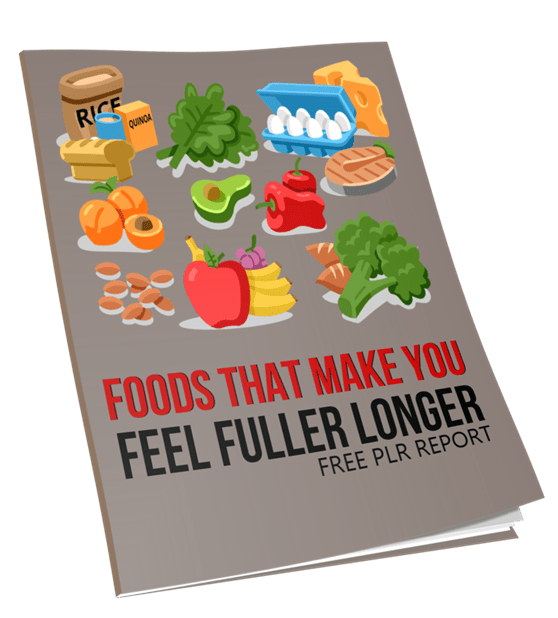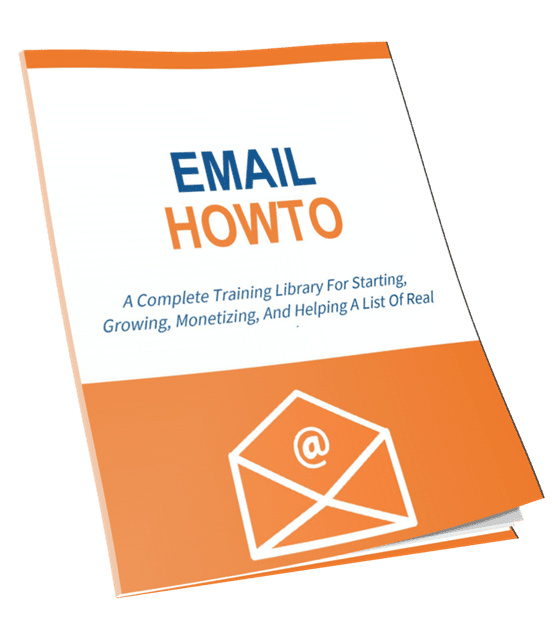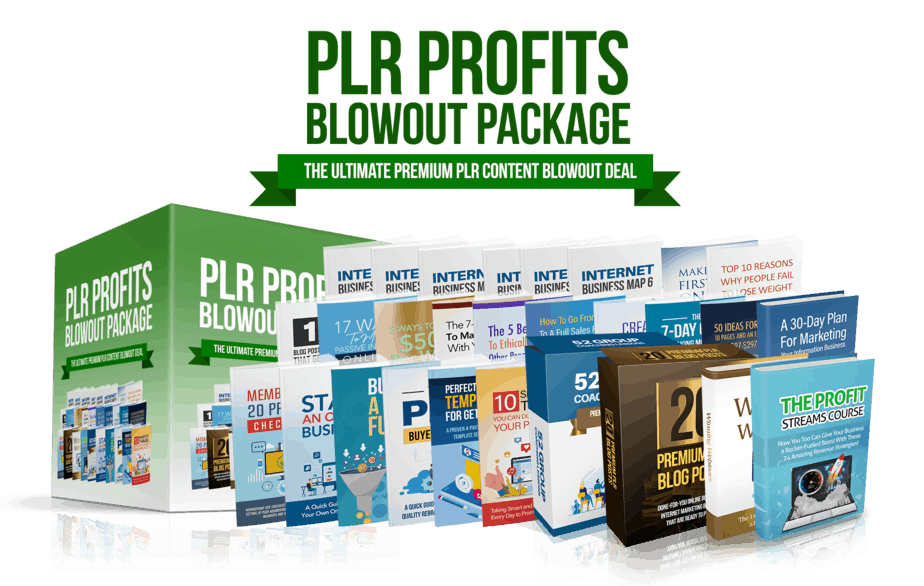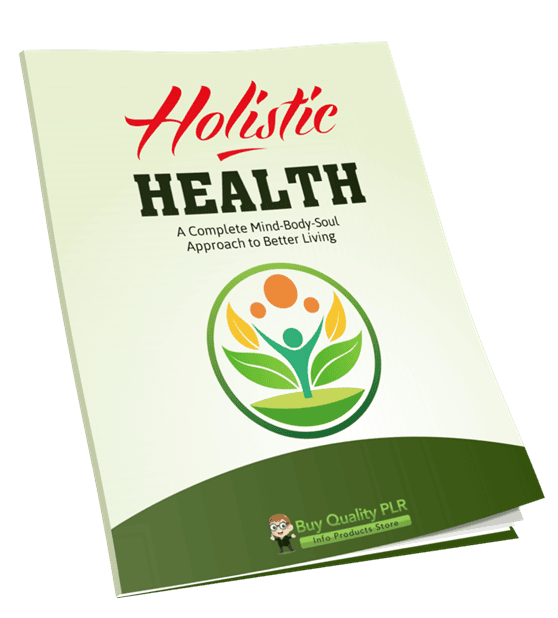
Holistic Health PLR Course 28k Words
in Health PLR , Health PLR eBooks , PLR Checklists , PLR eBooks , PLR eCourses , PLR List Building Reports , Premium PLR , Premium PLR eBooks , Premium PLR Reports , Premium White Label Brandable PLR Coaching Courses , Private Label Rights Products , Wellness PLR , Wellness PLR eBooksChoose Your Desired Option(s)
has been added to your cart!
have been added to your cart!
#holistichealth #plrcourse #wellnesscontent #healthplr #naturalhealing #healthyliving #contentcreation #plrresources #healthandwellness #plrproducts
Holistic Health PLR Course – A Complete Mind-Body-Soul Approach to Better Living 🌿
Are you ready to tap into the thriving health and wellness niche while offering a complete, ready-to-sell product? Introducing the Holistic Health PLR Course, a fully comprehensive 26,261-word course designed for entrepreneurs, coaches, bloggers, and online business owners who want to empower their audience while creating multiple streams of income.
This isn’t just another generic health product. It’s a step-by-step, actionable guide covering the full spectrum of holistic wellness: mind, body, and soul. Whether your audience wants to improve their nutrition, cultivate mental clarity, nurture their spirit, or integrate healthy habits into daily life, this course gives them everything they need to transform their lives.
Presenting…
Holistic Health PLR Course 28k Words
🌱 What’s Inside the Holistic Health PLR Course
The course is thoughtfully organized into five in-depth modules designed for learning, application, and long-term impact. Each module provides practical steps, exercises, and guidance to help your audience implement holistic health principles immediately.
📘 Module 1: Understanding Holistic Health
Start by exploring what holistic health truly means and why it matters. This module lays the foundation for the journey ahead.
Step 1: What is Holistic Health?
Holistic health examines the whole person—mind, body, and spirit—not just symptoms or diseases.
Step 2: Why It Matters
When we align all parts of ourselves, we feel more balanced, energized, and joyful.
Step 3: Key Pillars of Holistic Health
The main pillars include:
- Physical wellness
- Emotional well-being
- Mental clarity
- Spiritual connection
Step 4: How to Begin Your Journey
Start by observing your daily habits—what you eat, think, feel, and believe—and make small conscious changes.
🥗 Module 2: Nourishing Your Body
This module focuses on physical wellness, covering nutrition, hydration, and movement.
Step 1: Eat Whole, Real Foods
Fresh fruits, vegetables, whole grains, and clean proteins are essential for energy and vitality.
Step 2: Hydration is Healing
Drink at least 8 glasses of water daily to keep your body functioning at its best.
Step 3: Move Your Body Daily
From walking to yoga to dancing, find activities that bring joy while keeping your body strong.
Step 4: Listen to Your Body
Tune into cravings, energy levels, and rhythms—it’s your body communicating what it needs.
🧠 Module 3: Cultivating Mental & Emotional Wellness
Mental and emotional health are crucial for holistic well-being. This module provides tools to manage stress, reframe thoughts, and nurture emotional resilience.
Step 1: Practice Mindfulness
Slow down and live in the present moment to reduce stress and increase peace.
Step 2: Reframe Negative Thoughts
Replace unhelpful patterns with empowering, compassionate perspectives.
Step 3: Feel Your Feelings
Honor your emotions through journaling, conversation, or creative expression.
Step 4: Set Healthy Boundaries
Protect your mental energy by saying no when necessary and surrounding yourself with positivity.
🌞 Module 4: Nurturing Your Spirit
Reconnect with what inspires and uplifts you—your sense of purpose, joy, and inner peace.
Step 1: Connect to Something Greater
Whether it’s nature, faith, or meditation, find practices that feed your soul.
Step 2: Make Time for Stillness
Quiet reflection or meditation helps you tune into your inner wisdom.
Step 3: Discover Your Purpose
Identify what gives your life meaning and fulfillment—it’s the compass for holistic living.
Step 4: Practice Gratitude Daily
Keep a journal or note three things you’re thankful for each day—it transforms perspective.
🌀 Module 5: Integrating Holistic Habits into Daily Life
This final module helps your audience turn theory into practice, creating sustainable habits that balance mind, body, and spirit.
Step 1: Design Your Daily Routine
Include nourishment, movement, mindfulness, and rest for balanced living.
Step 2: Start Small & Stay Consistent
Focus on progress, not perfection—celebrate every small win.
Step 3: Build a Support System
Surround yourself with like-minded individuals who support your wellness journey.
Step 4: Reflect and Evolve
Regularly check in with yourself, adjust habits, and grow with grace.
📌 Extras Included
This PLR package goes beyond the course content to provide ready-to-use marketing and value-added resources:
- Holistic Health Checklist – 523 words: Quick, actionable reference for daily holistic habits.
- Holistic Health FAQs – 784 words: Common questions answered to establish authority and trust.
- Sales Page – 810 words: A professionally written sales page ready to use on your website or landing page.
💡 How to Profit from the Holistic Health PLR Course
The potential to monetize this PLR product is limitless. Here are some ideas:
- Sell the Full Course – Brand it, tweak it, and sell as a digital product or eBook.
- Break It Into Reports – Sell each module individually for $10–$20.
- Bundle With Other Products – Create premium packages priced $47–$97.
- Create a Membership Site – Offer the content as part of a monthly subscription.
- Convert into an E-Class – Charge $297–$497 for a multi-week online course.
- Turn Into Audio or Video – Record lessons for YouTube, podcasts, or online platforms.
- Lead Magnets – Use portions of the content to grow an email list.
- Flip a Website – Build a wellness site with this content, generate traffic, and sell the site.
This PLR course is designed to give you flexibility so you can monetize in a way that fits your business model.
✅ License Terms
Permissions:
- Sell as-is or with minor tweaks.
- Substantially modify (75%+) if claiming copyright.
- Break content into smaller portions to sell individually.
- Bundle, create membership sites, e-classes, physical products, or multimedia content.
- Use excerpts as blog posts, lead magnets, or incentives.
Restrictions:
- Cannot pass PLR or reprint rights to customers.
- Cannot give complete materials away for free.
- Maximum affiliate commission: 75%.
- Cannot include in existing customer orders without additional purchase.
Why This PLR Course Will Sell
- High-Quality, In-Depth Content – 26,261 words of actionable, expert guidance.
- Evergreen, High-Demand Niche – Holistic health is a growing trend worldwide.
- Versatile Formats – eBooks, reports, membership content, audio, video, and more.
- Ready-to-Use Marketing Materials – Sales page, checklist, and FAQs included.
- PLR Flexibility – Brand, edit, and customize to create unique products.
By offering this Holistic Health PLR Course, you’re helping your audience improve their lives while creating a profitable, scalable business for yourself.
🌿 Take Action Today
The Holistic Health PLR Course is a turnkey solution for anyone wanting to profit in the health and wellness niche. You get:
- A full 26,261-word course
- Modules covering mind, body, and spirit
- Marketing resources ready to use
- Multiple monetization opportunities
Empower your audience. Build your authority. Create your profit.
has been added to your cart!
have been added to your cart!
Here A Sample of Holistic Health PLR Course
Module 1: Understanding Holistic Health
Let’s begin by exploring what holistic health truly means. This module sets the foundation.
Step 1: What is Holistic Health?
Objective:
To provide learners with a clear, foundational understanding of the concept of holistic health, how it differs from conventional approaches, and why this integrated method is vital for long-term wellness.
Introduction to Holistic Health
Holistic health is a comprehensive approach to wellness that considers the whole person rather than focusing on isolated symptoms or illnesses. Unlike conventional healthcare models that often treat specific conditions through medication or surgery, holistic health seeks to understand and nurture the interconnection between the mind, body, and spirit.
This method recognizes that an individual’s physical condition is deeply linked to their emotional, mental, social, and spiritual well-being. In short, holistic health is not just about being disease-free—it’s about achieving balance, vitality, and harmony in all areas of life.
Key Components of Holistic Health
To understand holistic health in a practical, real-world context, it’s important to grasp its three core dimensions:
- Mind (Mental & Emotional Health)
Holistic health acknowledges the critical role of thoughts, emotions, and mental patterns. Stress, anxiety, and unresolved emotional issues can manifest as physical illness or fatigue. Therefore, mental clarity, emotional intelligence, and psychological balance are essential. - Body (Physical Health)
The body is the physical vessel that requires proper care through nutrition, exercise, rest, hydration, and preventive care. When the body is nourished and supported, it provides the strength and vitality needed for daily life. - Spirit (Spiritual & Inner Life)
This doesn’t necessarily mean religion. In holistic health, the spirit refers to an individual’s inner purpose, meaning, values, and connection to something greater than oneself. When this part is nurtured, people often experience greater peace, resilience, and life satisfaction.
The Holistic Approach vs. Conventional Approach
| Aspect | Conventional Approach | Holistic Approach |
| Focus | Specific disease or symptom | The entire person (mind-body-spirit) |
| Primary Tools | Medications, surgery, diagnostics | Lifestyle changes, nutrition, natural therapies, mental practices |
| Goal | Eliminate illness | Achieve balance, vitality, and longevity |
| Role of the Individual | Passive (patient follows orders) | Active (participant in their own wellness) |
| Timeframe | Short-term symptom management | Long-term lifestyle transformation |
Why the Holistic Approach Matters in Today’s World
In today’s fast-paced global environment, many people experience chronic stress, burnout, and lifestyle-related illnesses. Modern life often disconnects individuals from themselves, their communities, and nature. Holistic health helps to rebuild that connection, encouraging people to slow down, tune in, and make intentional choices for their well-being.
From an international perspective, the holistic model is universal and adaptable across cultures and health systems. Whether you’re in the United States, India, Europe, Africa, or the Middle East, the principles of holistic health apply:
- Nourish the body with regional whole foods
- Embrace movement and physical activity aligned with cultural practices
- Practice meditation or spiritual rituals rooted in local traditions
- Support emotional well-being through connection and community
Examples of Holistic Practices Worldwide
To further understand the universality of holistic health, here are a few regionally-influenced practices that reflect holistic principles:
- India: Ayurveda focuses on balancing bodily systems through diet, herbs, yoga, and meditation.
- China: Traditional Chinese Medicine uses acupuncture, qi gong, and herbal medicine to maintain energy balance.
- Europe: Many wellness movements promote naturopathy, mindfulness, and plant-based living.
- Africa: Indigenous medicine combines herbal treatments with spiritual healing.
- Middle East: Practices like prophetic medicine (Tibb) emphasize moderation, natural remedies, and spiritual alignment.
Each culture has a holistic thread woven into its healing traditions—proving that the concept is not new, but timeless and global.
What You Will Gain from This Step
By the end of this step, learners will be able to:
- Clearly define what holistic health means in an international and culturally-sensitive context
- Understand how mind, body, and spirit interconnect to influence overall well-being
- Identify key differences between conventional and holistic approaches to health
- Recognize that true health goes beyond just “not being sick” and involves living with balance and purpose
- Appreciate how different global cultures integrate holistic principles into their way of life
Reflection Questions for Learners
To deepen understanding and promote personal insight, consider these questions:
- Have you ever experienced a time when stress or emotions affected your physical health?
- What does “health” mean to you personally?
- Do you currently take care of your mind, body, and spirit equally—or do you focus more on one area?
- Which cultural or traditional health practices from your background align with holistic health principles?
Instructor Tips for Course Creators
- Use inclusive examples that apply to diverse global audiences
- Encourage learners to share cultural health wisdom from their own backgrounds
- Facilitate a short guided discussion or journaling activity to help participants personalize the concept
- If possible, include a short documentary clip or infographic that visualizes the integration of mind-body-spirit
Step 2: Why It Matters
When we align all parts of ourselves, we feel more balanced, energized, and joyful.
Objective:
To help learners understand the deep significance of holistic health in everyday life, and why aligning the mind, body, and spirit is essential for true wellness. This lesson moves beyond the definition and explains the real-life impact of holistic balance, both individually and globally.
1. The Impact of Misalignment: A Common Reality
Before we explore the benefits of alignment, it’s important to recognize what happens when we are not aligned.
- Mental Symptoms: Confusion, burnout, lack of focus, or negative self-talk.
- Emotional Symptoms: Mood swings, anxiety, numbness, irritability.
- Physical Symptoms: Fatigue, chronic pain, digestive issues, sleep problems.
- Spiritual Symptoms: A sense of emptiness, disconnection, or lack of purpose.
Most people around the world experience some form of imbalance at various points in life. Often, modern life demands so much of us that we prioritize productivity over wellness, and short-term survival over long-term health.
This disconnect leads to an overall sense of dissatisfaction—even when external needs appear to be met.
2. Holistic Alignment: What It Feels Like
When all aspects of our being—mental, physical, emotional, and spiritual—are in alignment, we begin to notice powerful shifts:
- We feel grounded and centered, even when life is challenging.
- Our energy levels stabilize, allowing us to be more productive without burnout.
- We experience emotional resilience, handling stress with clarity instead of panic.
- We develop a sense of inner joy, not dependent on material outcomes or external validation.
- We feel purpose-driven, knowing why we do what we do.
This alignment isn’t just a vague concept; it translates into real, measurable quality-of-life improvements.
3. The Science of Balance: Holistic Health Backed by Research
While holistic health includes spiritual elements, many of its benefits are scientifically supported. Here are a few key research-based connections:
- Mind-Body Connection: Studies show that chronic stress and unresolved emotional trauma can suppress the immune system, increase inflammation, and contribute to disease. Practices such as mindfulness, meditation, and expressive writing have been proven to reduce symptoms of anxiety, lower blood pressure, and improve sleep.
(Source: National Institutes of Health) - Nutrition and Mental Clarity: Nutrient-rich diets improve not only physical health but also cognitive function and emotional stability. Omega-3s, antioxidants, and gut-healthy foods influence mood and brain health.
(Source: World Health Organization) - Spiritual Well-being and Life Satisfaction: Research across global cultures shows that individuals with a strong sense of purpose or spiritual connection report higher life satisfaction, fewer depressive symptoms, and better coping strategies in the face of illness or hardship.
(Source: Journal of Health Psychology)
These findings affirm that the holistic model has both ancient wisdom and modern validation behind it.
4. Cultural Relevance: A Global Perspective
Holistic health isn’t just a trend; it is rooted in global traditions and spiritual systems from every continent. Across the world, we see various ways that alignment is pursued:
- Latin America: The integration of healing practices like curanderismo that address body, energy, and community relationships.
- Africa: Community-centered wellness where mental, spiritual, and physical health are inseparable from ancestral beliefs.
- Asia: Holistic systems such as Ayurveda and Traditional Chinese Medicine that have thousands of years of evidence supporting the balance of internal energies.
- Middle East: Healing and balance through prophetic medicine (Tibb)—emphasizing natural remedies, prayer, and moral balance.
- Europe & North America: A resurgence of holistic approaches including integrative medicine, naturopathy, and functional nutrition.
International course creators should highlight the cultural universality of holistic health to engage diverse learners and validate their existing practices or beliefs.
5. Real-World Applications: Everyday Alignment
Bringing this knowledge into daily life doesn’t require a complete lifestyle overhaul. Alignment is built through intentional micro-practices, such as:
- Drinking water first thing in the morning to honor your body
- Taking 5 quiet minutes to reflect or breathe mindfully
- Saying no to an energy-draining commitment
- Practicing gratitude for small daily joys
- Eating meals without distraction, focusing on taste and nourishment
Each action helps realign a piece of yourself, reinforcing a sense of internal harmony.
6. Benefits Learners Can Expect
By understanding and applying the principle of alignment, learners will begin to notice:
- More clarity in decision-making
- Increased ability to manage stress
- Improved relationships through emotional regulation
- Fewer physical ailments related to tension and fatigue
- Greater motivation, creativity, and joy in their personal and professional lives
These changes are transformative, not just for the individual, but for communities, organizations, and societies as a whole.
Reflection Activity for Learners
Encourage learners to take a few minutes to reflect on the following:
- Which area of your life—mind, body, or spirit—feels the most out of balance right now?
- What’s one small daily habit that helps you feel more like your true self?
- Can you recall a moment when everything felt “aligned” in your life? What was happening at that time?
Encourage learners to journal their answers or share in group discussions if appropriate for your course format.
Instructor Tips for International Course Creators
- Use neutral, inclusive language that respects cultural variations in spiritual and wellness beliefs.
- Encourage learners to relate the lesson to their own lived experience and regional practices.
- Provide real-life case studies or testimonials of people who experienced transformation through holistic alignment.
- Consider incorporating guided visualizations or breathing exercises to allow learners to feel alignment in the moment.
- Invite learners to track their alignment levels over time using self-assessment tools or well-being checklists.
Step 3: Key Pillars of Holistic Health
The main pillars are physical wellness, emotional well-being, mental clarity, and spiritual connection.
Objective:
To help learners understand the four essential pillars of holistic health, how they influence each other, and how nurturing each pillar contributes to an overall sense of balance, purpose, and vitality. This step will offer a comprehensive breakdown of each pillar, provide real-world examples, and give instructors practical tools to help students evaluate and improve their current state in each area.
1. Physical Wellness: The Foundation of Holistic Health
Definition:
Physical wellness refers to the health and function of the body. It includes nutrition, movement, rest, hydration, and preventative care.
Why It Matters:
A healthy body enables everything else—clear thinking, emotional balance, and spiritual awareness. When physical health is neglected, it’s difficult to function effectively in any other area.
Core Elements to Cover:
- Nutrition: A balanced, culturally appropriate diet that nourishes the body with essential nutrients, vitamins, and minerals. Emphasize local food traditions while promoting whole, minimally processed foods.
- Movement: Not limited to exercise. Includes daily activity, flexibility, cardiovascular fitness, and strength. This could be walking, yoga, dancing, or manual labor depending on one’s lifestyle and geography.
- Rest and Recovery: Quality sleep, relaxation techniques, and time away from stressors. Sleep hygiene is a global concern that impacts mental and immune function.
- Preventive Care: Routine check-ups, vaccinations, and screenings. Instructors should acknowledge that access to medical care varies globally, but education on prevention can empower all learners.
Instructor Tip:
Include checklists or trackers for students to evaluate their physical habits. Use international standards from organizations like the World Health Organization (WHO) for credibility.
2. Emotional Well-Being: The Anchor for Resilience
Definition:
Emotional well-being refers to the ability to recognize, express, and manage one’s emotions in healthy ways. It also includes forming supportive relationships and practicing self-compassion.
Why It Matters:
Unprocessed emotions can accumulate as stress, anxiety, or physical illness. Emotional intelligence is essential for communication, leadership, and conflict resolution.
Core Elements to Cover:
- Self-awareness: Recognizing emotions as they arise. Techniques like journaling, mood-tracking, and body scans help build this skill.
- Emotional Regulation: Strategies like deep breathing, mindfulness, reframing negative thoughts, or talking with a mentor.
- Healthy Expression: Encouraging appropriate emotional release—talking, writing, art, movement, or therapy.
- Connection & Support: Emotional well-being thrives in community. Encourage learners to reflect on who they turn to in times of emotional stress.
Instructor Tip:
Create safe spaces for learners to reflect and discuss emotional well-being. Respect cultural differences in how emotions are expressed or processed.
3. Mental Clarity: The Power of Focus and Perspective
Definition:
Mental clarity involves having a clear, focused, and organized mind. It encompasses cognitive functions like memory, decision-making, and creativity. It is also about mindset—how we view challenges, ourselves, and the world.
Why It Matters:
A cluttered or stressed mind can lead to poor decisions, decreased productivity, and overwhelm. Mental clarity allows learners to manage responsibilities, pursue goals, and maintain balance.
Core Elements to Cover:
- Mindfulness Practices: Meditation, breathing exercises, or reflective journaling that anchor the mind in the present.
- Information Management: Reducing digital overwhelm, practicing intentional focus, and taking regular breaks from media.
- Growth Mindset: Teaching learners to approach challenges as opportunities rather than setbacks.
- Mental Hygiene: Positive self-talk, affirmation, boundaries, and cognitive flexibility.
Instructor Tip:
Introduce tools like a daily mental declutter routine or weekly planning systems. Teach the importance of mental boundaries and media literacy.
4. Spiritual Connection: A Sense of Meaning and Inner Peace
Definition:
Spiritual connection is the experience of being connected to something greater than oneself—whether that is nature, a higher power, inner purpose, or shared human values.
Why It Matters:
Spirituality supports inner peace, compassion, hope, and moral guidance. It’s deeply personal and varies across cultures and faiths. Studies show that spiritual well-being correlates with lower stress, increased life satisfaction, and resilience during adversity.
Core Elements to Cover:
- Values and Purpose: Knowing what drives you and what you stand for. This helps learners make aligned decisions and find fulfillment.
- Rituals and Practices: These might include prayer, meditation, time in nature, attending religious or cultural gatherings, or daily reflections.
- Connection to Others: Spiritual health is often cultivated in community. Creating or participating in shared rituals or acts of service builds connection.
- Silence and Solitude: Time alone for introspection often nurtures the spiritual self, especially in a noisy, fast-paced world.
Instructor Tip:
Be inclusive. Acknowledge that spiritual connection does not require organized religion. Let learners explore what spirituality means for them personally.
Teaching Format Suggestions for This Module
- Pillar-by-Pillar Breakdown: Dedicate a video or lesson to each pillar with local examples and global perspectives.
- Self-Assessment Activity: Ask students to rate themselves in each pillar (1–10 scale), then reflect on which area needs the most attention.
- Pillar Journaling Prompts:
- Physical: How do I treat my body daily?
- Emotional: What emotion have I been avoiding?
- Mental: What thoughts repeat most often?
- Spiritual: What brings me a sense of peace or wonder?
- Real-Life Case Studies: Share stories of individuals or cultures successfully integrating all four pillars.
Cultural Note for International Course Creators
When teaching internationally, remember that:
- The definition of health is culturally shaped. Avoid imposing one-size-fits-all views.
- Spirituality might be expressed differently. Use broad language like “inner peace” or “purpose” alongside religious terms.
- Physical practices vary due to geography, economy, and access. Promote adaptability rather than prescriptive routines.
- Emotional expression is also culturally influenced. What is considered appropriate in one culture may be avoided in another.
Design course content with respect, flexibility, and curiosity about your learners’ lived realities.
Key Takeaway for Learners
True health is not the absence of disease—it is a balanced state across all four pillars. These pillars are interconnected, and progress in one can uplift the others. By understanding and nurturing each area, learners can create a deeply rooted, sustainable state of well-being that honors their whole self.
Step 4: How to Begin Your Journey
Start by becoming more aware of your daily habits—what you eat, think, feel, and believe.
Objective:
This lesson will guide learners to initiate their holistic health journey by cultivating self-awareness. Through introspection, daily tracking, and mindful observation, students will begin identifying which current habits support their health—and which may be holding them back. The goal is to spark intentional living, not to make drastic changes all at once.
This step is foundational. Holistic health begins not with prescriptions, but with presence.
1. Begin with Self-Awareness, Not Self-Judgment
What This Means:
Encourage learners to observe, not criticize their routines, choices, and thought patterns. The first step toward transformation is understanding where they are now, with compassion and curiosity.
Practical Teaching Strategies:
- Start with a 3-day self-observation practice. Ask students to record without changing:
- What they eat and drink
- Their physical movements or inactivity
- Emotional ups and downs
- Mental distractions or clarity
- Spiritual reflections or disconnections
- Emphasize that this is not about perfection or performance. This is about becoming a “neutral observer” of one’s own life.
Instructor Tip:
Use phrases like “Get curious, not critical.” Normalize imperfection. Remind learners that noticing patterns is more powerful than instantly fixing them.
2. Examine What You Eat: Your Relationship with Food
What This Means:
Food is not just fuel—it’s culture, emotion, memory, and often habit. Helping learners assess their eating patterns will set the stage for sustainable physical wellness.
Practical Teaching Strategies:
- Ask learners to record:
- What they ate (describe, not count calories)
- When they ate it
- Why they ate it (hunger, boredom, emotion, tradition?)
- How they felt after eating
- Teach students to observe patterns like:
- Skipping meals
- Emotional or stress eating
- Processed food reliance
- Hydration levels (or lack of)
International Consideration:
Honor local dietary traditions. This is not about enforcing one diet, but increasing awareness of the relationship between food and well-being.
Instructor Tip:
Offer a printable “Food & Mood Tracker.” Include room for notes on cultural meals or fasting practices, if relevant.
3. Notice What You Think and Feel: The Inner Dialogue
What This Means:
Much of our mental and emotional life runs on autopilot. This step helps learners pause and listen to the inner voices that shape self-image, choices, and responses.
Practical Teaching Strategies:
- Introduce a Daily Thought Reflection. Have learners spend 5 minutes noting:
- Recurring thoughts or worries
- What triggered an emotional shift that day
- Internal dialogue (Is it critical? Encouraging? Doubtful?)
- Discuss the idea of emotional weather—some days are cloudy, some are clear. The goal isn’t to “control” emotions, but to understand how they influence behavior.
- Invite students to label emotions accurately—many people are only familiar with “happy, sad, or angry.” Introduce emotional vocabulary like “anxious,” “disappointed,” “peaceful,” “motivated,” or “overwhelmed.”
Instructor Tip:
Provide a list of emotion words and reflection prompts. Remind learners that all emotions are valid, but how we respond to them is within our power to grow.
4. Explore What You Believe: Core Values and Assumptions
What This Means:
Our beliefs shape our worldview and behavior—often unconsciously. This part of the journey invites learners to ask:
“What do I believe about health, myself, others, and life?”
This creates space to align actions with deeply held values.
Practical Teaching Strategies:
- Prompt learners with questions like:
- “What does being healthy mean to me?”
- “What do I believe I deserve in life?”
- “What do I assume is possible for my health and happiness?”
- “Who taught me what health should look like?”
- Help learners identify core values such as balance, kindness, growth, family, or freedom. Then encourage them to assess if their daily life reflects those values.
- Introduce the idea of limiting beliefs (e.g., “I’ll never have enough time for myself,” “I’m not disciplined enough,” “Wellness is only for the wealthy”). These beliefs are powerful, but they can be questioned and re-shaped.
Instructor Tip:
Create a values clarification worksheet. Ask students to circle their top 5 values and reflect on how their routines support or challenge those values.
Sample Activity for Learners: “24-Hour Life Mirror”
Instructions:
- Ask learners to document one full day in detail:
- Wake time
- First thoughts of the day
- First thing they ate or drank
- Amount of time spent on screens
- Physical movement
- Emotions felt throughout the day
- Interactions with others
- Evening reflections
- Sleep time
- Then, guide them to answer:
- What did I notice that surprised me?
- What habits made me feel energized or calm?
- What habits left me feeling depleted?
- Where might I want to begin making small adjustments?
Cultural Sensitivity for International Course Creators
When delivering this step to a global audience:
- Use neutral, inclusive language that respects various lifestyles and belief systems.
- Avoid suggesting one “ideal” way of living—invite students to explore what’s ideal for them, within their own cultural, spiritual, and economic context.
- Recognize that some learners may have experienced trauma, illness, or systemic barriers that influence their daily habits. Compassion must be central.
Key Takeaway for Learners
Before any lasting change can occur, we must see ourselves clearly. This step is not about overhauling your life—it’s about awakening to how your daily choices shape your well-being. As you begin to notice what you eat, think, feel, and believe, you gain power. Power to choose. Power to heal. Power to live on purpose.
We’re also giving these extra bonuses
Holistic Health – Checklist
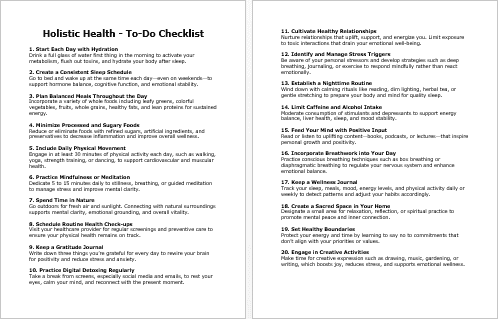
Holistic Health – FAQs

Holistic Health – Salespage Content

Package Details:
Word Count: 26 261 Words
Number of Pages: 107
Holistic Health – Bonus Content
Checklist
Word Count: 523 words
FAQs
Word Count: 784 words
Salespage Content
Word Count: 810 words
Total Word Count: 28 378 Words
Your PLR License Terms
PERMISSIONS: What Can You Do With These Materials?
Sell the content basically as it is (with some minor tweaks to make it “yours”).
If you are going to claim copyright to anything created with this content, then you must substantially change at 75% of the content to distinguish yourself from other licensees.
Break up the content into small portions to sell as individual reports for $10-$20 each.
Bundle the content with other existing content to create larger products for $47-$97 each.
Setup your own membership site with the content and generate monthly residual payments!
Take the content and convert it into a multiple-week “eclass” that you charge $297-$497 to access!
Use the content to create a “physical” product that you sell for premium prices!
Convert it to audios, videos, membership site content and more.
Excerpt and / or edit portions of the content to give away for free as blog posts, reports, etc. to use as lead magnets, incentives and more!
Create your own original product from it, set it up at a site and “flip” the site for megabucks!
RESTRICTIONS: What Can’t You Do With These Materials?
To protect the value of these products, you may not pass on the rights to your customers. This means that your customers may not have PLR rights or reprint / resell rights passed on to them.
You may not pass on any kind of licensing (PLR, reprint / resell, etc.) to ANY offer created from ANY PORTION OF this content that would allow additional people to sell or give away any portion of the content contained in this package.
You may not offer 100% commission to affiliates selling your version / copy of this product. The maximum affiliate commission you may pay out for offers created that include parts of this content is 75%.
You are not permitted to give the complete materials away in their current state for free – they must be sold. They must be excerpted and / or edited to be given away, unless otherwise noted. Example: You ARE permitted to excerpt portions of content for blog posts, lead magnets, etc.
You may not add this content to any part of an existing customer order that would not require them to make an additional purchase. (IE You cannot add it to a package, membership site, etc. that customers have ALREADY paid for.)
Share Now!

